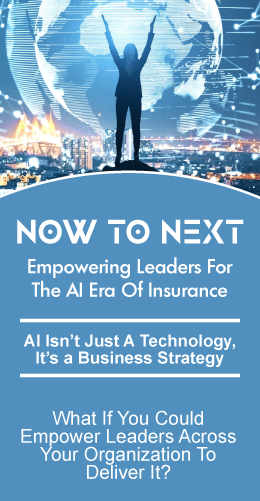The life and voluntary benefits industry is transforming rapidly. Traditional underwriting approaches can no longer meet new customer expectations and market trends. Personalized underwriting, tailored to each customer’s unique needs and preferences, is the future, driving growth, profitability, and satisfaction.
Why a Different Approach to Underwriting is Needed
The insurance industry is facing serious challenges today. Customer preferences are shifting rapidly, and market trends are evolving. To thrive, it’s essential to break from traditional underwriting and embrace a personalized approach. Here’s why:
Today’s customers demand more personalized experiences and solutions. They want insurance that caters to their needs and lifestyles rather than a one-size-fits-all policy.
Insurance is more competitive than ever, with new players entering the field and established companies innovating. To stand out, insurers must differentiate themselves by providing personalized underwriting solutions.
Technology has changed how we live and do business. Artificial intelligence, machine learning, and the Internet of Things (IoT) have given insurers access to unprecedented amounts of data and advanced tools.
Personalized underwriting allows insurers better to understand each customer’s unique risks and circumstances. This, in turn, results in more accurate pricing and better risk management. Underwriting has relied on broad risk categories and generalizations in the past, which can lead to inaccurate pricing and misaligned risk assessments. This is no longer a competitively viable approach.
The New Approach to Underwriting
The future of underwriting is personalized, using technology and data to develop bespoke insurance solutions for each customer. This innovative approach considers individual risk factors, preferences, and lifestyles to create tailored policies that better serve customers and optimize insurers’ risk management and pricing strategies.
Personalized underwriting relies on cutting-edge tools and technologies, including AI-powered language models, IoT devices, machine learning algorithms, and behavioral science insights. By leveraging these resources, insurers can analyze vast amounts of data to create a more accurate and comprehensive understanding of each customer’s unique risk profile.
Personalized underwriting focuses on prevention, encouraging customers to adopt healthier lifestyles and take proactive steps to reduce risks. Insurers can improve the overall risk pool and foster stronger, long-lasting relationships with customers, leading to better coverage and a healthier and more predictable client base.
In this new underwriting paradigm, insurers can revolutionize how they assess risks, price policies and serve their customers, ultimately paving the way for a more innovative and customer-centric insurance industry.
Leveraging New Data Sources to Create Customer Value
The next generation of personalized underwriting incorporates diverse data sources to create more customer value. Insurance companies can tailor benefits and services that cater to each individual’s unique needs, ultimately enhancing customer satisfaction and loyalty.
Health data from wearable devices: Insurance companies can tap into wearable device data to offer personalized wellness programs, discounted gym memberships, or customized health coaching. This can help customers lead healthier lives and lower their insurance premiums.
Genetic testing and health screenings: Insurance companies can offer personalized benefits such as cancer screening programs, disease management plans, and discounted preventative treatments by analyzing genetic test results and health screening data. This proactive approach can improve health outcomes and help customers manage their unique health risks.
Social media activity and purchasing habits: Examining an individual’s social media activity and purchasing habits can provide insurance companies with insights into their lifestyle, interests, and behaviors. This information can be used to offer personalized benefits such as discounts on healthy food delivery services, wellness retreats, or even incentives to encourage positive lifestyle changes.
Health risk assessments and health history: Comprehensive health risk assessments and a thorough understanding of an individual’s health history enable insurance companies to tailor benefits to address specific medical needs and risks. This can include personalized health coaching, disease management programs, or preventative treatments customized for each customer.
Financial data and mental health data: Analyzing financial data can identify stress levels and overall mental health, allowing insurance companies to offer personalized benefits such as financial counseling or mental health support. This holistic approach can contribute to customers’ overall well-being and potentially reduce claims related to stress-induced health issues.
Prescription drug data: Evaluating an individual’s prescription drug history can help insurance companies determine their risk of developing certain health conditions. Customers can better manage their health and enjoy more affordable insurance policies by offering personalized benefits such as disease management programs or discounted preventative treatments.
Geospatial data: Using geospatial data enables insurance companies to consider the impact of an individual’s geographic location on their risk profile. Insurance companies can assess environmental factors such as air quality, access to healthcare facilities, and potential exposure to natural disasters. By incorporating this information, insurance companies can offer location-specific benefits such as air purifier discounts, enhanced telemedicine access, or additional coverage for natural disaster-related damages.
Driving Growth, Profitability, and Customer Satisfaction
Personalized underwriting is a game-changer for the insurance industry, unlocking tremendous value in growth, profitability, and customer satisfaction. By catering to individual needs and preferences, insurers can attract and retain customers more effectively, driving growth and increasing market share.
Offering tailored insurance solutions enhances the customer experience, leading to higher satisfaction and loyalty. Personalized underwriting allows insurers to assess each customer’s unique risk factors accurately, resulting in more accurate pricing of policies that reflects the true risk associated with each customer. This approach not only improves overall risk management but also enhances profitability.
Real-life success stories show that insurers implementing personalized underwriting have seen impressive results, such as increased customer satisfaction, better risk management, and improved profitability. By embracing this approach, insurers can pave the way for a more innovative, customer-centric, and profitable insurance industry.
Changes Needed in Underwriting Processes and Roles
Revamped underwriting processes require integrating new data sources, utilizing advanced analytics, and refining workflows to provide a seamless and efficient underwriting experience for customers and underwriters alike.
Underwriters must shift to technology and data-driven insights. As such, they must develop new skills, including data analysis, machine learning, and AI, to adapt to the evolving landscape.
Change Management, Innovation, and Agility are required to overcome challenges and barriers, including resistance to change, regulatory concerns, and potential technological barriers. To overcome these obstacles, your company must foster a culture of innovation and agility, encouraging continuous learning and experimentation as you transition to the new underwriting paradigm.
Enhanced efficiency, accuracy, and satisfaction: Personalized underwriting enables you to make faster and more informed decisions, resulting in a better customer experience and a stronger competitive position in the market.
Business and Technology Considerations
Strategic planning for success is required. Developing a clear strategy and roadmap that outlines the necessary steps, resources, and timelines are required for a successful transition.
Choosing the right technology stack is critical for your company’s success in personalized underwriting. This may include investing in AI-powered tools, machine learning algorithms, and IoT devices, as well as integrating these technologies with your existing systems to create a seamless and efficient underwriting process.
Upskilling your workforce is essential to ensure employees have the skills and knowledge required to excel in the new environment. This may involve offering training programs, workshops, or partnering with external experts to help your workforce develop the necessary competencies.
Data privacy and security are important considerations. Your company must establish robust data protection policies and practices, ensuring compliance with relevant regulations and maintaining customer trust.
Collaboration and partnerships with technology providers, data aggregators, or other industry players can help you accelerate your initiative an increase your chances of success By fostering a collaborative ecosystem, you’ll be able to access the resources and expertise needed to drive innovation and stay ahead of the competition.
The Competitive Advantage of Personalized Underwriting
Personalized underwriting offers a distinct competitive advantage by tailoring insurance solutions to each customer’s unique needs. It differentiates your company from competitors relying on traditional, one-size-fits-all approaches.
Adopting personalized underwriting increases market share and customer retention. Customized policies and more accurate risk pricing attract new customers while keeping existing ones loyal to your brand.
Personalized underwriting optimizes risk management and pricing strategies, leading to improved profitability. A better understanding of each customer’s individual risk factors enables accurate policy pricing and efficient management of overall risk pool.
Personalized underwriting demonstrates your company’s commitment to innovation and staying ahead of industry trends. Continued investment in new technologies and processes positions your company as a forward-thinking leader in the insurance space, attracting more customers and maintaining a competitive edge
Ethical and Privacy Considerations in Personalized Underwriting
Maintaining ethical practices: Using personal data to make underwriting decisions could lead to unfair treatment of certain customers. Ensuring that your underwriting practices remain ethical and unbiased while leveraging data for better risk assessment is vital.
Privacy concerns become increasingly relevant with personalized underwriting relying heavily on customer data. Your company must adhere to data protection regulations and transparently communicate how customer data will be used in the underwriting process. Obtaining informed consent is crucial for maintaining customer trust.
Protecting sensitive data such as health records or financial data requires strict data handling policies to prevent unauthorized access or misuse and protect this sensitive information.
Unbiased AI and algorithms require ensuring that your algorithms are transparent, fair, and unbiased. Preventing unintended discrimination and promoting ethical decision-making in underwriting helps maintain customer trust and promote transparency.
Implementing Personalized Underwriting
- Assess current processes: Identify areas that could benefit from personalization to set realistic goals for your initiative.
- Develop a clear strategy: Create a comprehensive plan outlining objectives, resources, and timelines.
- Invest in technology: Select the right technology stack, including AI tools and machine learning algorithms, to efficiently collect, analyze, and leverage customer data.
- Train your workforce: Offer training programs and workshops to develop necessary competencies.
- Establish data privacy policies: Develop robust data protection policies to ensure compliance and maintain customer trust.
- Pilot and refine: Launch a pilot program to test and refine your approach before rolling it out on a large scale.
- Monitor and measure success: Track growth, profitability, and customer satisfaction KPIs to inform future improvements.
What the Next Generation of Insurance Underwriters Needs to Know
Embrace data-driven decision-making and develop data analytics, AI, and machine learning skills to make informed decisions in a personalized underwriting environment.
A deeper understanding of behavioral science will also be essential as underwriting becomes more customer-centric, helping underwriters better comprehend and predict customer behavior, and leading to more accurate risk assessments and pricing.
Underwriters must stay informed about relevant regulations and guidelines that impact personalized underwriting, adapting to the changing landscape to confidently navigate the complex world of personalized underwriting.
Strong communication skills will be vital as personalized underwriting becomes more customer-centric. Underwriters must be able to effectively convey complex information to customers, helping them understand the rationale behind underwriting decisions and policy pricing.
Professional development and staying informed about industry trends will help underwriters remain successful in the ever-evolving world of personalized underwriting as the insurance industry is constantly changing.
Future Proofing Your Company and Career
The insurance industry’s future lies in personalized, preventative, and AI-powered underwriting approaches. As technology advances and customer expectations shift, companies that adopt personalized underwriting will have a competitive advantage in driving growth, profitability, and customer satisfaction.
The time for insurance companies to embrace the next generation of underwriting is now. Doing so can ensure a bright future for their customers and organizations in an ever-changing and competitive industry.
Let’s get started.
Mike Connor, CEO, SVIA
Your thoughts and comments are appreciated.








